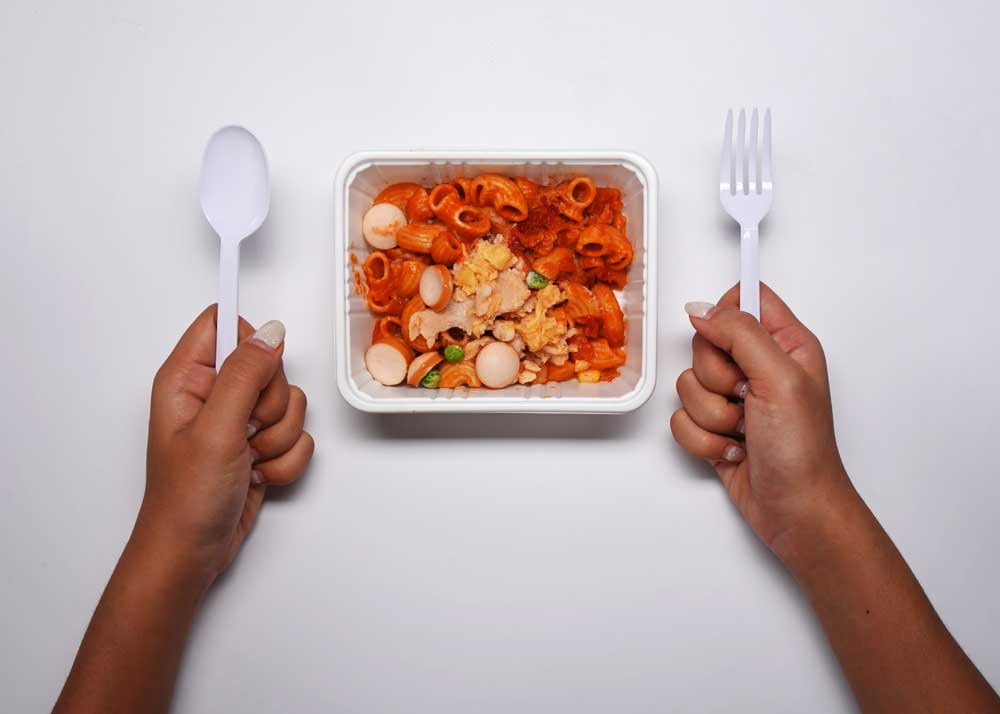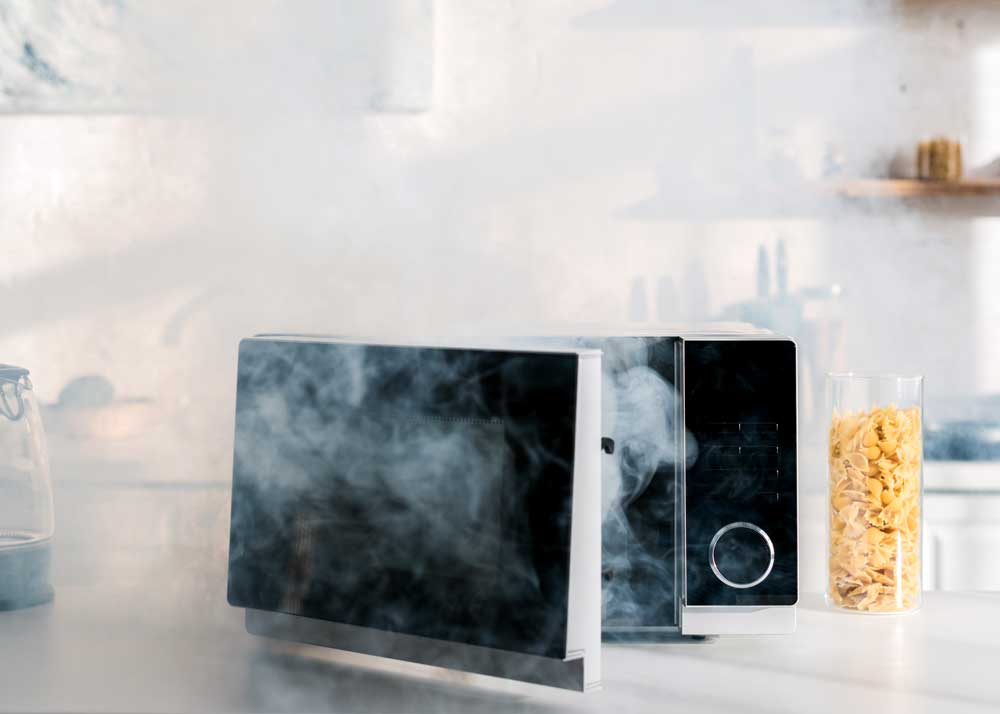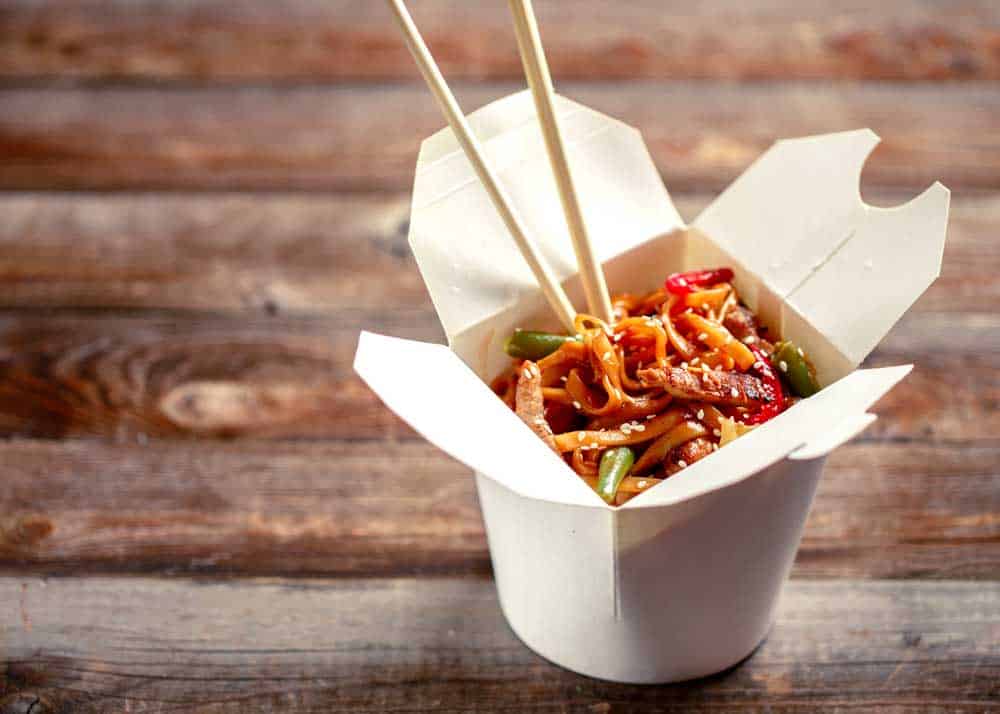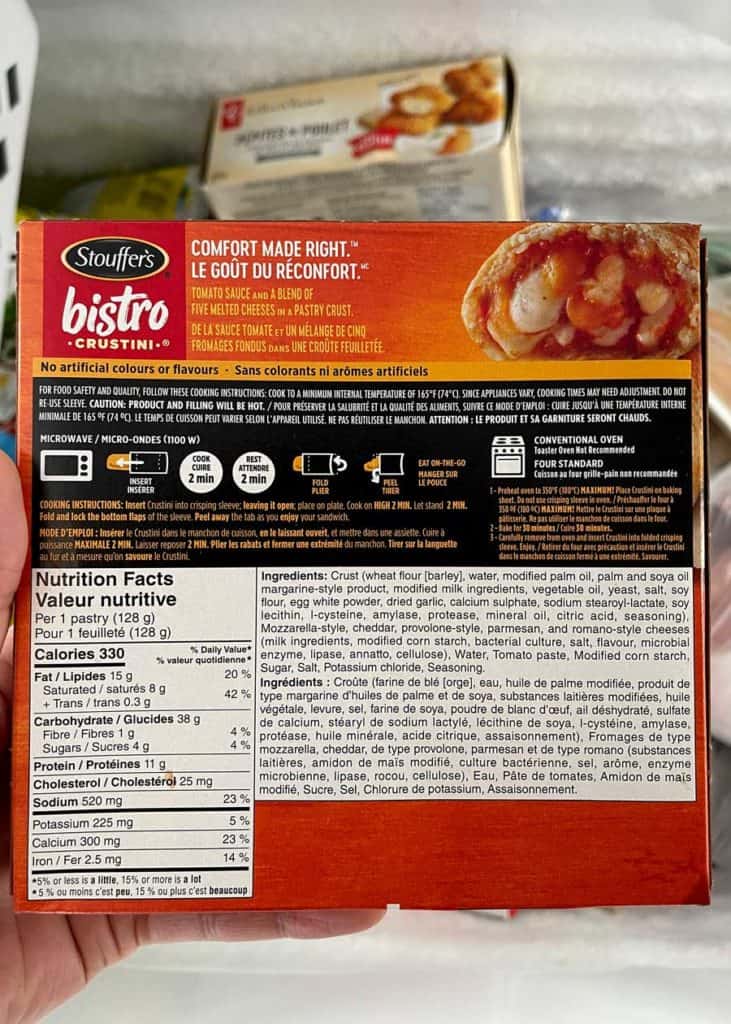You may have seen videos of people microwaving cardboard and causing a fire. Is this safe? Can you microwave cardboard? In this article, we will answer these questions and more by providing safety tips for microwaving cardboard and explaining why you should avoid it as much as possible.
While some cardboard is safe to microwave, caution is needed. Cardboard can contain waxes, glues, and chemicals that can become a safety hazard when heated. Some packages also contain metal staples or handles that can start a fire. Only microwave cardboard that is stated to be microwave safe.
Better yet, transfer the food to a glass dish and avoid the risk.

Table of Contents
Is It Safe to Microwave Cardboard?
Depending on the type of cardboard and what materials are added to it, the chemicals in the cardboard can cause a fire when heated, but sometimes it is perfectly safe.
The best route overall is to avoid microwaving cardboard altogether. The chemicals in some types of cardboard can be dangerous when heated, and there is a risk of starting a fire.
Here’s what microwave manufacturer Whirpool has to say.
Unfortunately, cardboard can contain glues, waxes and other materials that can make it a safety hazard in the microwave. Some cardboard takeout boxes even have metal handles or fasteners that can cause sparks and present a fire hazard. Keep your microwave (and your family) safe by removing food from cardboard containers and placing them in glass or microwave-safe plastic instead.
Whirlpool.com
Will Cardboard Light on Fire in the Microwave?
Cardboard can catch on fire if heated for too long in the microwave. The heat can ignite the chemicals in the cardboard, and the smoke can quickly fill the room. Some cardboard packages contain metal components that can spark and ignite a fire.
If you see smoke or flames coming from the cardboard, immediately stop the microwave. Then remove it from the microwave when safe and extinguish the fire.
Can You Microwave Cardboard Safely?
If you must microwave cardboard, there are a few safety tips that you should follow.
- First, only heat the cardboard for a short period of time.
- Second, make sure that the cardboard is completely dry before microwaving it.
- Third, place the cardboard on a plate or in a bowl to catch any sparks or flames.
- Finally, always stay close to the microwave in case of a fire.
If you follow these tips, you can microwave cardboard safely. However, we recommend avoiding this practice altogether, as it is not always safe.
How Long Can You Microwave Cardboard?
You should never microwave cardboard for more than a few seconds.
The chemicals in the cardboard can heat up and cause a fire. If you see smoke or flames coming from the cardboard, immediately remove it from the microwave.
What Happens if You Microwave Cardboard?
If you microwaved cardboard and it caught on fire, quickly remove it from the microwave and extinguish the flames.
Do not put water on the fire, as it can worsen. Instead, use a dry chemical extinguisher or baking soda to extinguish the flames. Once the fire is out, safely dispose of the cardboard.
If you microwaved cardboard and it did not catch on fire, the food may not be safe to eat.
The chemicals in the cardboard can be released into the food when heated, and these can be dangerous to your health.

Can I Microwave Brown Paper Bags?
What about brown paper bags? While these might seem different than heavier cardboard, it presents the same risks.
Here’s what the U.S. Department of Agriculture says about cooking in a brown paper bag.
Do not use brown paper bags from the grocery or other stores for cooking. They are not sanitary, may cause a fire, and may emit toxic fumes. Intense heat may cause a bag to ignite, causing a fire in the oven and possibly contaminating the turkey. The ink, glue, and recycled materials in paper bags may emit toxic fumes when they are exposed to heat. Instead, use commercial oven cooking bags.
Food Safety and Inspection Service, USDA
Instead of microwaving in cardboard or paper, this microwave potato bag or microwave steam bag will be a safer choice.
And while plastic isn’t an ideal material for the microwave, using microwave-safe plastic is better than most cardboard.
Can You Microwave Cardboard Takeout Boxes?
While it is convenient to pop leftover Chinese takeout in the microwave, you should avoid using the box it came in. The takeout box is made to store food, but not be heated to the intense temperatures that microwaves can generate.
This applies to pizza and burger boxes, lasagna trays, and really any kind of takeout containers.

13 Tips to Microwave Cardboard Safely
Here are some quick tips to keep in mind if you decide to heat something up that comes in a cardboard container.
1. Read All Package Labels
You should always read the labels on any packaging before microwaving it. The label will often have instructions on how to microwave the product safely.
Only microwave cardboard packages that state they are “microwave safe”.
2. Check for Metal
Before microwaving cardboard, check for metal objects such as staples or foil. These can cause a fire when heated in the microwave.
3. Use Short Bursts
If you must microwave cardboard, only do so for short periods of time. The longer you heat it, the greater the risk of starting a fire.
4. Monitor Closely
When microwaving cardboard, always stay close by and monitor it closely.
If you see smoke or flames coming from the cardboard, immediately remove it from the microwave and extinguish the fire. Do not leave the microwave unattended when heating cardboard.
5. Use a Plate
If you are going to microwave cardboard, place it on a plate or in a bowl. This will help contain any sparks and help keep your kitchen safe from potential fires.
6. Avoid Wet Cardboard
Make sure that the cardboard is completely dry before microwaving it. If there is any moisture present, it can cause a fire.
Wet cardboard can easily start a fire when microwaved. Never put wet cardboard in the microwave.
7. Recycle Safely
Once you have microwaved your cardboard, recycle it safely by placing it in the correct bin. Make sure to follow the recycling guidelines in your area.
8. Never Heat Plastic
Plastic that isn’t specifically labeled as microwave-safe can melt when heated in the microwave. If you must reheat food in plastic, make sure to use a microwave-safe container.
9. Keep Flammable Objects Away
Make sure to keep any flammable objects away from the microwave when heating cardboard. This includes things like paper towels, curtains, and clothing.
10. Extinguish Flames
If the cardboard catches on fire, quickly remove it from the microwave and extinguish the flames. Do not put water on the fire, as this can make it worse.
Instead, use a dry chemical extinguisher or baking soda to extinguish the flames. Once the fire is out, safely dispose of the cardboard.
11. Cover Your Food
When microwaving food, always make sure it is covered with a lid or plastic wrap. This will help prevent splatters and keep your microwave clean.
12. Use the Correct Power Setting
When microwaving food, make sure to use the correct power setting. Higher settings can cause food to overcook faster or start a fire.
13. Clean Your Microwave Regularly
You should clean your microwave regularly to prevent the build-up of grease and food.

9 Things You Shouldn’t Microwave
While microwaves can re-heat and cook lots of foods, there are some things you shouldn’t microwave.
These include:
- Take-out containers
- Paper lunch bags
- Styrofoam (unless marked as microwave safe)
- Mugs and plates with gold or silver trim
- Plastic containers
- Eggs
- Uncovered bowls of sauce
- Hot peppers
- Aluminum foil and Steel travel mugs
Here’s the full list of things to avoid microwaving.
More reading: Do Chia Seeds Go Bad?
Safe Cardboard Alternative
Rather than using cardboard, we recommend choosing microwave-safe glass containers for reheating food in the microwave.
These glass storage containers are safe for microwave, fridge, freeze, oven, and dishwasher.
Wrap Up
These are just a few tips to keep in mind when microwaving cardboard. Microwaving cardboard is not always safe, and it can be dangerous if not done correctly.
Always use caution when microwaving anything, and never leave the kitchen unattended while the microwave is running.
- About the Author
- Latest Posts
Bryan Haines is a co-founder and writer on Tasty Plate – and is working to make it the best food blog in the world.
While living in South America, Bryan enjoyed learning about new foods and preparation methods. Back in Nova Scotia, he enjoys growing food in the backyard. And then preparing it with traditional (and non-traditional) methods and ingredients.
He is also co-founder of Storyteller Media, a company he started with his wife, Dena.

